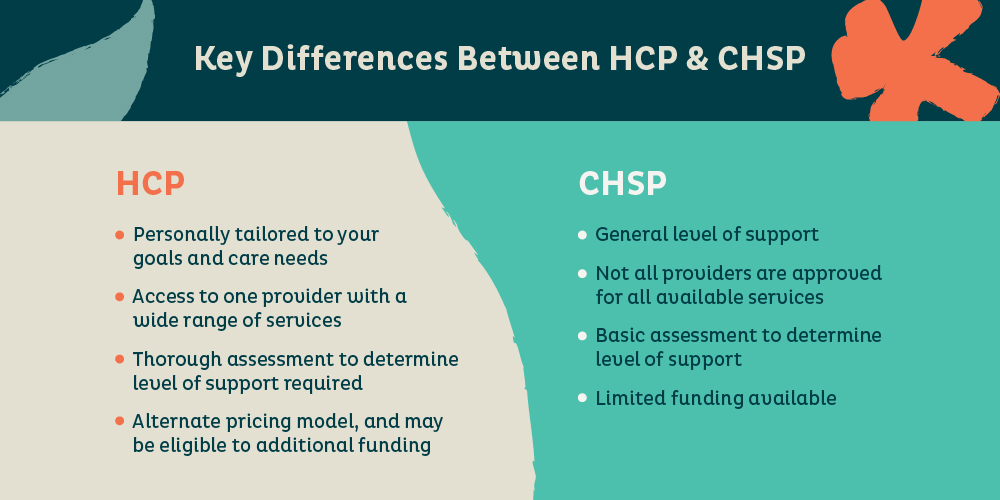
What’s The Difference: HCPs vs CHSP
During your exploration of the various home care services, there’s no doubt that you’ve probably come across two key options. Home Care Packages (HCPs) and the Commonwealth Home Support Program (CHSP) are programs from the Australian government that both aim to support older people with staying in their homes longer. Despite their similar goals, however, they each have key differences, which we’ll explore in this blog.
What Are Home Care Packages?
Home Care Packages are designed to subsidise a wide range of home and community support services from registered providers. These government packages are usually eligible for older people with more complex needs and individually tailored to ensure they maintain a sense of independence. There are four levels of funding ranging from basic needs to high-level care, which is determined based on the decisions of a government Aged Care Assessment Team (ACAT). With this funding, individuals can choose the aged care provider they want to receive services from.
What Is The Commonwealth Home Support Program?
The Commonwealth Home Support Program is a government initiative that seeks to provide older Australians with basic assistance for daily tasks around the household. The required services are chosen from a set list, with people usually only needing support in one or two areas. The Regional Assessment Service (RAS) determines the program’s eligibility, and individuals are usually asked to partially cover the cost of the specific services they require.
Key Differences Between HCPs & CHSP
The main differences between Home Care Packages and the Commonwealth Home Support Program can be broken down as below:

- Level of Support
HCPs can provide higher levels of care for older people compared to the CHSP. They can be personally tailored to include more significant services such as dementia support. In comparison, the services available in the CHSP are basic such as help with cooking, cleaning and other household tasks.
- Choice & Flexibility
You can only choose one HCP provider, however, there is generally a wide range of services available. On the other hand, the services in the CHSP can be provided by several sources, but the type of support is limited. This is why the CHSP is often regarded as a temporary measure before moving onto a Home Care Package.
- Assessment & Eligibility
After an initial assessment, people who fall into the complex needs category will be required to have the ACAT perform a further face-to-face examination, where they will determine the degree of support that is required. This may involve questions about your medical history, physical requirements, and other needs. The eligibility for the CHSP similarly requires a face-to-face examination from the RAS. However, this is less thorough than the requirements for a Home Care Package, and the purpose is to identify whether you qualify for subsidised support or not.
- Costs
Home Care Packages usually cost more than the Commonwealth Home Support Program services. It involves a government subsidy, a basic daily care fee and an income-tested care fee if required. In contrast, the cost of a Commonwealth Home Support Program involves the government subsidy and your own personal contribution to pay for the services.
How Whiddon Can Help
Deciding whether you or a loved one requires a HCP or the CHSP can be confusing. Thankfully, at Whiddon, we can help you plan the options best suited to your needs. As an award-winning aged care provider, we offer services covered by HCPs and the CHSP. Get in touch to learn more about our community care services today.




